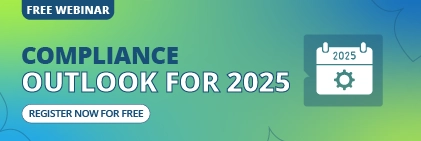Governance, Risk Management, and Compliance (GRC) is more than what most people first think. It’s not just a fancy buzzword; it’s an invaluable framework that keeps you organised, well within the bounds of the law, and resilient against any risks. For HR managers and business owners, it can seem complex on the surface, but this blog post will guide you through all the regulatory complexities, employee issues, and resource limitations that you may face. We’ll explore common GRC implementation challenges and offer practical solutions to build your business to be as resilient as possible. Let’s explore how challenges within your business can be used to grow and protect yourself from the risks that permeate the business world.
What is GRC and Why Does It Matter?
GRC stands for Governance, Risk Management, and Compliance. These are a set of disciplines that work to align your organisation’s operations with its goals while managing risks and regulations.
Here’s a quick breakdown:
Governance: The policies, processes, and structures that inform decision making and resource use.
- Risk Management: Identifying, assessing, and mitigating risks that could disrupt your business. These should be found before they impact the business.
- Compliance: Ensuring adherence to laws, regulations, and industry norms.
GRC acts as your guiding light. It points you towards success, while allowing you to navigate your legal requirements, reduce reputational damage, and other operational hazards. HR managers use it for policy enforcement and employee management, and business owners are able to safeguard their long term business interests. Companies with strong frameworks are known to reduce compliance costs, albeit based on the size and scope of the business.
Why does it matter, you may ask? These systems help bridge the gap between strategy and outcomes. GRC helps you make better choices, reduce inefficiencies and build trust with your stakeholders. Operating a business without a risk management and compliance mechanism may lead to significant challenges.
The Biggest Challenges in GRC Implementation
Implementing GRC isn’t a walk in the park. Below are the most common obstacles HR managers and business owners face, along with some insights on why they’re so tough to crack.
1. Lack of Understanding of GRC
By and large, the most common challenge when implementing the system is the human aspect. Implementation can be tricky, and this is only compounded when your employees don’t understand what it is or the benefits it has to offer. HR managers might disregard it as yet another source of paperwork, while owners might see it as a waste of money, and it’s these types of misunderstandings that stop progress before it has a chance to begin.
GRC concepts can feel abstract or loose, without a clear basis for your employees to understand what they’re for. Providing concrete examples of risks mitigated, or benefits reaped, can greatly improve your employee engagement. Without early interest from your team, the business will have a hard time implementing GRC successfully.
2. Resistance to Change
It’s no secret that most of us are creatures of habit. Employees will tend to resist change unless there’s a clear benefit to be had, and introducing a system as complex as this will inevitably shake up how things are normally run in your workplace. Change as drastic as this can feel risky, so getting results as soon as you can is essential to implement this successfully. Staff training in the new system is one of the best ways to overcome this natural resistance, and managers should lead by example and slowly adjust the company culture to integrate GRC successfully.
3. Lack of Resources
Implementing GRC can demand a lot from your business, including time, money, and knowledge. For small businesses, this can limit any implementation momentum, with a large upfront cost seeming insurmountable. It’s important to keep in mind that even when budgets are tight, implementing a GRC framework is an investment in your business’s future. You’re effectively making a bet with your future self, saying that investing all of these resources now will earn dividends in the future. In almost all cases, you’re going to win that bet, and you’ll thank yourself for it.
4. Siloed Approach to GRC
Inadequate interdepartmental communication can complicate GRC processes. For almost all aspects of business administration, you’ll find that most modern office environments all work together with a clear vision for the company’s future. If your HR, IT, and management teams all work in isolation, with little to no communication between them, you’ll struggle to implement a GRC system efficiently. Your workplace culture will actively hinder its own growth.
5. Inadequate Technology
Outdated tools, like spreadsheets or legacy software, often can’t handle the complexity of modern businesses. Without appropriate technology, manual processes can lead to inefficiencies and an increased risk of errors.
Modern tools, such as Sentrient’s GRC Software, efficiently address various issues and provide effective solutions, significantly simplifying the owner’s responsibilities.
Solutions to Overcome GRC Implementation Challenges
All of these challenges may seem overwhelming, but with a few simple steps, you’ll find that a lot of them can be overcome with proven and practical strategies.
-
Educate Stakeholders on GRC
Informed teams are engaged teams. Help your staff understand changes by hosting workshops and sharing success stories, or try to link it to simple, everyday tasks, such as the handling of user data. Begin with a half-hour session with HR and leadership, emphasising benefits like reduced risks. Let them naturally share the information across the business.
-
Develop a Change Management Plan
Creating a clear roadmap showing the path forward can help ease your team into the new system. Outline key phases such as awareness, training, and the rollout, and assign team leaders whom you can trust to lead the way. As confidence in the solution grows, resistance will naturally fade away.
-
Allocate Adequate Resources
You don’t need to invest everything all at once. Working at a slow but steady pace can certainly work. Allocate one team member to oversee GRC, or outsource the early steps, and scale up as the results begin to speak for themselves. Budget for a small tool, without allocating time away from more critical tasks, and you’ll see steady progress.
-
Implement an Integrated GRC Approach
Prevent issues caused by isolated departments by uniting departments under a shared vision, whilst integrating GRC throughout the business. You can do this by setting up cross-department meetings and by defining and working towards common goals. These can include things like compliance with industry regulations.
GRC Implementation Best Practices
1. Develop a GRC Strategy and Framework
You’ll want to align your policy with your overall mission. Business owners want to see the business grow, HR wants to see compliance, and risk managers want to see risks mitigated. Keeping a focused goal keeps all your efforts on the right track and consistent across all teams. Policies or procedures that clearly outline departmental responsibilities eliminate confusion and prevent overlap or internal conflicts.
2. Implement GRC Processes and Track Performance
By standardising risk assessments and auditing/reporting, you can cut down on errors and save time. Regular risk reviews help identify discrepancies and will save a significant amount of money in fines and other compliance related penalties. By using this data to track your progress over time, you’ll find that adjustments to operations management can save the business a lot of time and money.
Measure what matters:
- Risk Exposure: Are threats shrinking? Aim for a 20% drop year-over-year.
- Compliance Rate: Are you hitting 100% on audits?
- Cost Savings: Track reductions in fines or inefficiencies
- Employee Buy-In: Survey adoption – 80% approval signals success.
- Customer Trust: Monitor feedback; happier clients mean the system is working.
- Tie metrics to morale: engaged teams will perform drastically better.
Key Takeaways:
- Tie GRC to your goals.
- Build a simple, unified framework.
- Standardise for efficiency.
- Use data to refine your approach.
Other Key Ideas
GRC Tools and Software
Tech can make or break GRC. You need to choose between the best software out there, versus the most affordable. Sentrient’s all-in-one GRC System is easy to implement and deploy in minutes, saving you time and money on an effective product.
Scaling GRC with Growth
Your governance systems should grow alongside your business. Add modules such as cybersecurity training or refine processes to match new risks. You can leverage advanced technology such as predictive risk analysis to identify issues before they turn into crises, and flag compliance gaps to save potential fines. The level of depth offered by GRC systems ensures that you can have a competitive edge in your industry.
Embedding GRC in Culture
GRC should be integrated into the organisational culture to the extent that it becomes a standard practice. Celebrate success and reward compliance. Highlighting positives maintains a healthy work environment while GRC integration ensures safety.
Conclusion
GRC implementation can seem daunting, but the rewards are worth it. For HR managers, it’s about controlling operational chaos; for business owners, it’s about protecting your vision. Start with education and pick tools that fit. Follow best practices, track progress, and scale as you grow. Take the first step today. After all, your organisation’s future might just depend on it.
FAQs
1. What’s the first step in GRC implementation?
Training is always the first step when looking for a successful and long lasting implementation. Employee engagement is the key to unlock the businesses untapped potential.
2. How long does GRC implementation take?
It varies from business to business, which is why Sentrient’s flexible model works so well. In general, however, it can take anywhere from a few weeks to a few months. It all depends on your scale and preparedness.
3. Can small businesses afford GRC?
Yes! Sentrient offers affordable frameworks and tools that are perfect for small and medium-sized businesses. We have a user-friendly UI and solution experts on hand, ready to help you while on call.
4. What’s the biggest GRC mistake to avoid?
Don’t undervalue your stakeholders. Everyone needs to be on the same page, otherwise there stands a very real risk of your implementation plans going up in smoke. Communication is key, and it’s up to you to be on top of your business.
5. How do I convince my team that GRC matters?
Sharing your wins and tying them to your day-to-day activities will encourage your team and show them the benefits of GRC. Cost savings and more accessible reports are simple ways to show the value of a strong risk compliance solution.
Read More About Governance, Risk Management, and Compliance:
- How GRC Strategies Protect Your Organisation from Risks and Liabilities
- Overcoming GRC Implementation Challenges: A Comprehensive Guide
- The Benefits of Integrating GRC into Your Business Operations
- How to Build a Risk Assessment Framework: 5 Steps Explained
- The Future of AI in Governance, Risk and Compliance (GRC): A Detailed Guide





